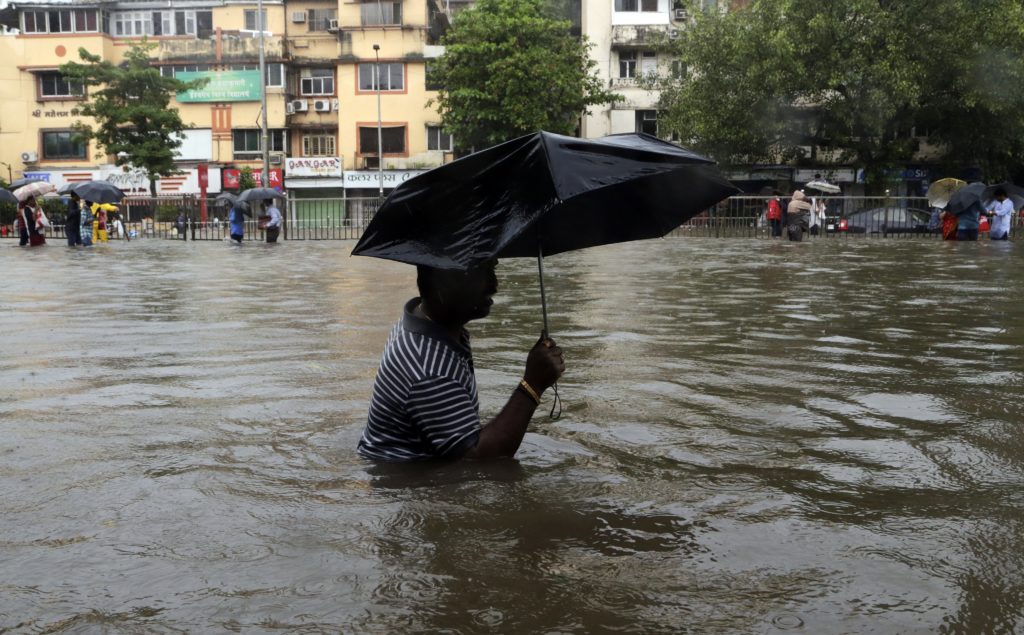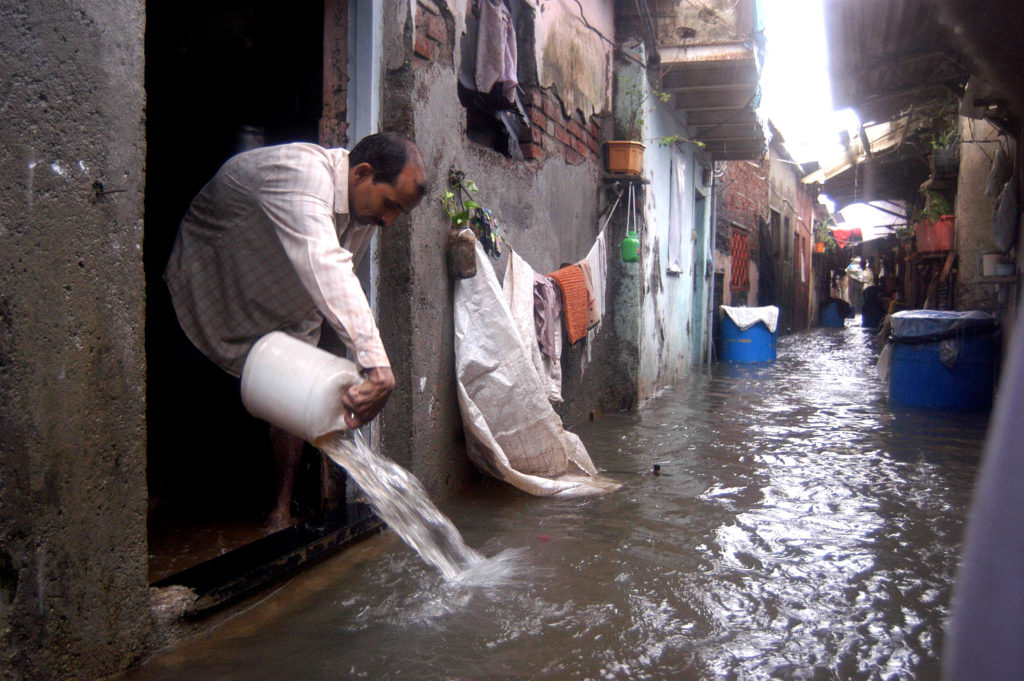Table of Contents
Mumbai Floods
For most of the inhabitants of Mumbai, monsoons are the newest form of struggle. They deal with Mumbai floods on a yearly basis, the anticipation of its moods, enduring its wrath, and rebuilding after the waters leave. Only people far from the city’s reality can remain unmoved by these affairs.
Almost every time there is rain, the residents of Nala Sopara walk in knee-deep water and wade to work. In Mankhurd, the single-story accommodations sink, while families throw out water to keep their homes above it. In Mahim in central Mumbai, families stack up to their belongings as water seeps through the walls.
Each time it pours, Mumbai floods, tragic stories of victims and inspiring stories of courage, support and mutual aid appear. However, all of this is in vain because it happens each year without change. It is not normal in the world of today to live like this, so what is the problem with Mumbai floods?
The science of land and water
The science of flooding requires knowledge and understanding of the relationship between land and water. Rainwater is either absorbed and contained by land, or allowed to drain into natural water bodies. The transformation of the land and physical features can enhance these properties. What absorbs water and recharges ground sources are flood plains, coastal wetlands, salt marshes, lakes, rivers, natural green cover, fields, and unpaved open-spaces. Paved-over city areas need to be designed in a way to drain water that comes, by slope management and carefully integrated system of both artificial and natural channels.

The land is a central component of infrastructure for flood management, as well as changing its nature. In other words, the land is what provides the living space and sustains vital ecosystems. It has both an economic value, but it provides ecological services too. A systematic failure to recognize the relationship between the land and the water is why Mumbai floods every year.
Much of the so-called development involves eliminating the absorptive capacity by filling up ponds and lakes, conversion of the permeable green cover into concrete, and ‘reclaiming’ wetlands and salt marshes. These land development practices also constricted and erased natural drainage systems. Therefore, rather than managing the water, the city made itself more vulnerable to floods.
Infrastructure and planning?
So far, we established that flooding is a symptom of the increasingly worsening urbanization. However, instead of strengthening the existing systems that constitute the socio-ecological infrastructure, people invest faith and money in various mega-projects like the Brihanmumbai Storm Water Drainage project (BRIMSTOWAD), which prove ineffective and unaccountable.
BRIMSTOWAD involves a network of storm-water drains, concrete embankments, and pumping stations. The result is the narrowing of the streams and estuaries widths, shifting of high-tide lines and loss of mangrove ecosystems upstream of pumping stations. Although the pumping facilities eject large quantities of water into the sea, they also tend to shift flooding to other areas not previously hit by Mumbai floods.
Ecological planning and infrastructure
At least four approaches should be considered. The first is ecosystems integration, involving steady documentation and rezoning of undeveloped areas and natural ecosystems, as well as their integration as city infrastructure for flood prevention. Lands in Mumbai that are No Development Zones are plantation areas, groves, fields, wetlands, salt marshes, ponds, and streams. Ecological planning of these areas and enhancement of their capacities to function as flood prevention systems should not be overlooked.

The second approach is ecological restoration or allowing the ecosystems that degraded over time to regenerate. This involves leaving an area be. However, sometimes artificial remediation is needed. Many Mumbai streams and rivers lost their vegetation to edge concretization and reclamation, while wetlands, ponds, and lakes are neglected. All of these must be revived.
Settlement upgradation is third. Some communities that are most vulnerable to flooding live in self-built settlements, insecure and under-serviced from Mumbai floods. Neighborhood infrastructure and service upgradation like waste management, sewage, stormwater drainage, and water harvesting could greatly improve living conditions and lessen the risks of flooding.
Last but not least, the development controls and retrofitting the existing formal builtscape is the fourth. Water collection and harvesting, de-concretization of the water channels that already exist, and replacing hard-paved areas. These actions will improve the capacity of land to absorb overflowing surface water.
Steps like these are much more effective than a large scale mega project. Mumbai floods are a serious problem in India, and people will never live a normal life until something changes. Being constantly afraid whenever you see a dark cloud is no way to live your life in modern society.
